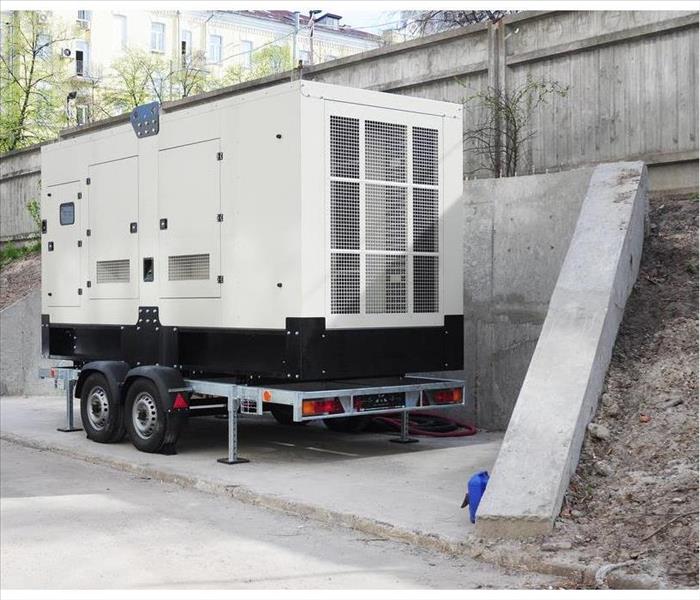Backup Generators 101
10/17/2018 (Permalink)
During and after a major storm, a commercial generator could provide the power you need to cleanup your property or to get your Gilberts,IL, business back into action. For the best results, you should understand how the machine works and how long you can count on its operation.
Types of Engines
There are several types of engines in this equipment, and the engine type affects how the machine functions, when and where it's used, and its efficiency. Some common options include:
- Marine
- Natural gas
- Petroleum
Inside the Machine
There are seven essential parts inside a commercial generator. These include
- Alternator
- Battery
- Cooling and exhaust
- Engine
- Fuel system
- lubrication
- Voltage regulator
In addition to these internal parts, there is usually a frame, rotating shaft, armatures, stator and commutator, and a brush assembly. Each component within the equipment plays an important role and may need maintenance or repairs for reliable operation.
How It Works
When you power the machine on, it doesn't create electricity; instead it stimulates electrical charges. Using mechanical interactions, electrical charges are sent through wiring and into the device requiring power. In other words, moving energy is converted into electricity. In many machines, copper coils and magnets provide the desired motion. This process is called electromagnetic induction.
When the power goes out, your backup power source may turn on automatically or you may need to connect it and get it running. Modern machines often have sensors that trigger the machine's operation. This option is valuable to many property owners. It's a good idea to put your machine to the test on an annual basis, so you can catch any malfunctions or damages before you need an extra source of power.
When Problems Arise
Sometimes, however, generator problems affect the equipment, putting you in a precarious situation if a storm is on the horizon. The synchronized operation of the internal parts is essential to appropriate operation. If you don't understand how the machine works, you may struggle to provide the proper maintenance and repairs to keep it running. Fortunately, commercial storm recovery professionals may know how to get your equipment back into working condition before the rain begins.

 24/7 Emergency Service
24/7 Emergency Service
